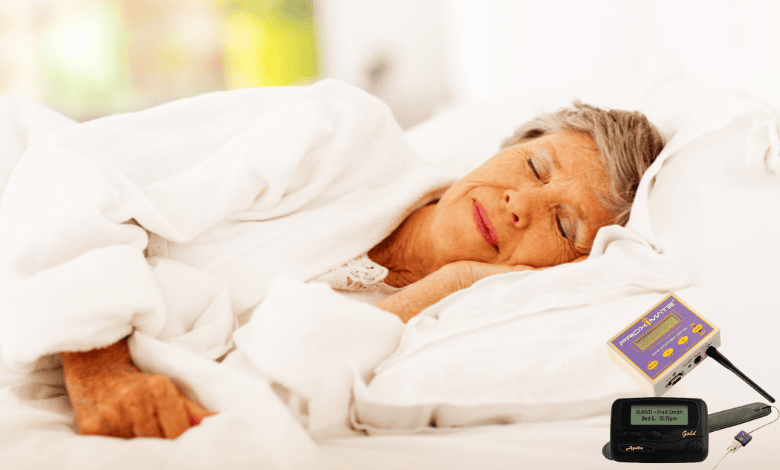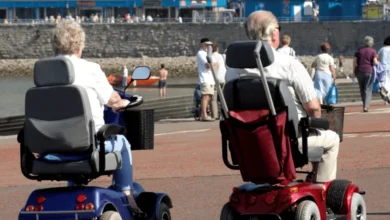Helping Seniors Stay Safe: Proximate Alarms In Aged Care

Keeping our oldies safe and sound in aged care homes is a top concern for families across Australia. It’s no secret these facilities provide a supportive environment, but worries about falls, wandering, and getting help quickly enough are always on the back of your mind. Thankfully, some clever new tech is emerging to give everyone a helping hand – enter proximate alarms. These nifty little gadgets are like guardian angels you can wear or stick on the ground. Plus, the benefits of using proximity alarms are off the charts for both seniors and the amazing folks who care for them. This blog dives into how these alarms can create a safer, more comfortable environment for our elderly loved ones.
How proximate alarms work in aged care
Imagine a scenario where a resident with a history of falls is wandering unsupervised. A floor mat equipped with a proximate alarm system can detect their movement and send a notification to a caregiver’s smartphone or a central monitoring station. This allows for a swift response, potentially preventing a fall and ensuring the resident’s well-being.
There are several types of proximate alarms used in aged care:
- Wearable tags: These lightweight pendants or wristbands emit a signal when a resident presses a help button or if they move outside a pre-set perimeter.
- Floor mats: Placed in an area that grabs quite a lot of attention in the house, these mats can sense the weight of a resident and trigger an alert if they try to leave unsupervised.
- Door sensors: Installed on doorways leading either out or into the prohibited areas, these kinds of sensors assist in signalling when a resident has just opened a door, caregivers will then be able to intervene if necessary.
The distances of these alarms can be changed accordingly, depending on the size of the facility and the special needs of the residents. Certain systems use bi-directional communication that provides access to elderly person’s wearable tags directly to the caregivers.
Benefits of proximate alarms for seniors and caregivers
The advantages of using proximate alarms in aged care facilities are numerous. Here’s a closer look at how they benefit both residents and caregivers:
For seniors:
- Improved safety: Proximity alarms act as a safety net for seniors, especially for those vulnerable to falls or wandering. A shorter reaction time to emergencies can greatly minimise the risk of injuries.
- Enhanced independence: Being aware that help is readily accessible can help seniors lead a more independent life within the facility.
- Increased peace of mind: The existence of a solid safety system can help overcome anxiety among seniors and their families.
For caregivers:
- Reduced stress and workload: Real-time updates enable caregivers to spot and help residents quickly, shortening wait times and thereby increasing the workflow at large.
- Improved resident care: Enhanced speed and improved situational awareness allow attentive and personalised caregiving.
- Enhanced job satisfaction: Knowing the jobs are done well and safety is in place, caregiver satisfaction will also increase.
Real-life examples showcase the positive impact of proximate alarms. A study conducted in a New South Wales aged care facility revealed a significant decrease in resident falls after implementing a floor mat and wearable tag alarm system. Additionally, caregiver surveys reported a reduction in stress and increased confidence in their ability to respond to emergencies.
Considerations when choosing proximate alarms for aged care
Selecting the right proximate alarm system for an aged care facility involves careful consideration of several factors:
- Resident needs: The specific needs and abilities of the residents should guide the choice of alarm types and features. For instance, some residents might require two-way communication capabilities, while others may benefit from simpler wearable tags.
- Facility layout: The size and layout of the facility will influence the range and number of alarms needed. Strategically placed floor mats and door sensors can create designated safe zones while ensuring optimal coverage.
- Budget: Proximate alarm systems come in different price ranges depending on features and complexity. Facilities should determine a budget and compare options to find the most cost-effective solution that meets their needs.
Beyond these considerations, it’s crucial to prioritise resident privacy. The alarm system should be comfortable to wear and not intrusive. Additionally, data security measures should be in place to ensure resident information is protected. Resources from organisations like the Australian Aged Care Quality and Safety Commission (ACQSC) can offer valuable guidance on choosing and implementing proximate alarm systems.
Additional considerations
- Integration with existing monitoring systems: For a seamless workflow, consider how the proximate alarm system can integrate with existing call bell or nurse call systems within the facility.
- Staff training: Effective use of these alarms requires proper training for caregivers on using the system, interpreting alerts, and responding promptly.
- Resident and family education: Educating residents and their families about the system’s functionality and benefits can foster trust and ensure everyone feels comfortable with the technology.
Conclusion
Proximate alarms are the next-generation technologies that are advancing patient care and revolutionising the elderly care sector. Through immediate monitoring and rapid response, the help alarms are intended to allow aged care facilities to create a safer and more secure environment for the residents. This translates to the satisfaction of families that their relatives are in good hands and rest assured. The tech itself is unarguably impressive, but its real significance is manifested in the positive effect that it brings to the lives of both seniors and caregivers.
The horizon for proximity alarms in Australian nursing homes is filled with the best possibilities. With technology that is getting more complex and user-friendly all the time, many more improved systems will appear. The integration of the wearables with AI-powered analysis could open other probabilities of preventive care and individualised interventions. Ultimately, we should strive for a future where technology and human interaction are in harmony, a goal that is aimed at protecting the mental well-being and dignity of our senior community.
Before you go, don’t forget to check out.






